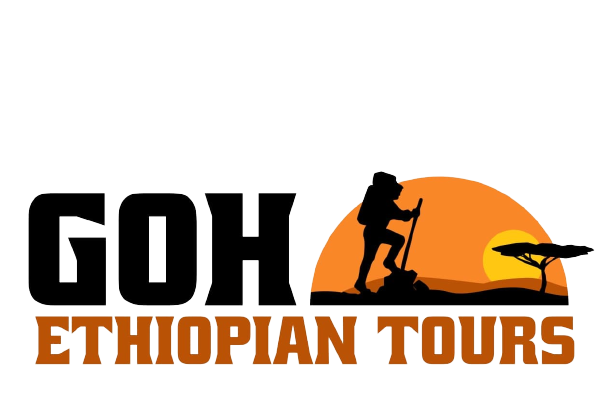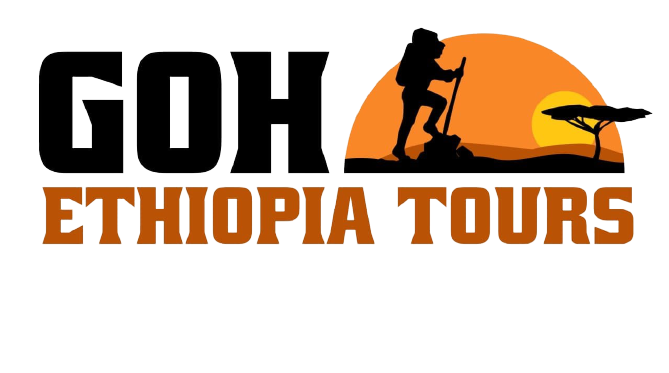- Home
- Capital City
Capital City
Entoto Mountains
At the top of the rising slope of Entoto Mountain range there is a site where Menelik II established his capital. The visitor to this place can ride a taxi, drive a car or even stroll up the steep to reach it at 3200 meters above sea level. The breath of fresh and cool air, the site of the exuberant flora and the pungent aroma of the eucalyptus trees along each side of the road make the trip very delightful. A further excitement is waiting in Entoto Museum. This museum contains articles of great quality and historical significance. The drum that announced the march to Adowa against the Italian invasion, the bed Menelik II used while in Ankober, crown and a Persian carpet are only few of the numerous exhibits depicting Entoto's glorious past. The most breath-taking view of the city and the surrounding areas, the sites of the beautiful architectural style of archangel Raguel and St.Mary churches, and a visit to Menelik's old palace add to an experience the visitor will always cherish.


Ethnographic Museum Of The Institute Of Ethiopian Studies
The Museum brings the many diverse ethnic groups of Ethiopia under one roof. The layout follows the story of life from birth to death, and beyond, and how the different stages of life are viewed and experienced by different ethnic groups in Ethiopia. Fortunately the museum is found in the old palace, Genente Leul, of the late Emperor Haile Selassie. The building welcomes all visitors with dignity and grace. The museum is accommodated on the first and second floors; comprising the bedroom of the late Emperor and ethnographic section on the first floor and the art gallery on the second floor. The bedroom reminds us that the building was once a palace in the formative period of modern Ethiopia. It is the first modern palace imitating European style. We see here the bed, which Haile Selassie used for more than ten years and some personal gifts to the late Emperor. The reception hall now hosts ethnographic items of more than eighty language groups. It is divided into two parts. The first part introduces the general socio-economic conditions of the country. It displays production tools and some techniques of craftsmen.
The National Museum Of Ethiopia
The first measure was taken in Ethiopia towards the safeguarding of the nation's historical and cultural heritages when archaeological research began in collaboration with a French team of scientists. Due to the continued research there arose the aim of organizing an institution to preserve and exhibit the collections. The national museum of Ethiopia was established in 1944 and began its activities by exhibiting a few archaeological collections as well as some ceremonial costumes and ethnographic objects. The museum gradually improved and developed to its present standard as the country's leading national museum in 1966 and transferred to the building where it is located today. One of the major objectives of the museum is presenting selected artifacts worthy of exhibition using the best display techniques available as a means of education and enjoyment for the general public.
Exhibits of the national museum are presented under the following four main sections.
Paleontology and pre- history; - Lucy and other fossils including stone tools.
Historical and Archaeological findings that depict the early history from the pre-Axumite times to the 16th century AD.
Ethnography: - Traditional and ceremonial costumes, jewellery… etc. reflecting the diversified cultures of the various ethnic groups.
Modern Art: Selected paintings and sculptures from different Ethiopian artists, such as; Maitre Artist Laureate Afework Tekle. Almost every object has captions so that visitors can learn about the Nation's rich history. Besides its regular services, the museum organizes special tour programs for student and interested groups whenever requested.
The museum also controls the export of historical and cultural relics abroad, i.e., it investigates the souvenirs purchased by tourists and other visitors in order to protect heritages from being exported abroad. A special section of the Museum is authorized to manage and examine the historical value and purity of the objects to be exported by tourists.


St. George Museum
This museum is located inside the precincts St. George's Church around the Piazza. Relatively speaking, the museum, which is under the church's bell tower, is small. However, it contains several valuable historical relics, and is open for public visit every day. Inside the museum, one can see differently shaped crosses, religious books, parchments, vestments of religious leaders as well as handicraft products.
The Zoological Natural History Museum (ZNHM)
Ethiopia is known globally as one of the centers where diverse wild animal types exist. Many of Ethiopian wild animals are endemic to the country, for example; 30 species of Mammals, 28 species of birds, 30 species of Amphibians and 10% of its fish species have been identified as native to Ethiopia The ZNHM is the only one of its kind in Ethiopia where samples of the rich Ethiopian wildlife is on display. As per the information derived from a pamphlet of ZNHM, the Museum now has a small collection, which includes more than 1,100 species. The number of specimens is more than 3,500. The following list is a rough estimate of the category of organisms in the ZNHM:
The program can be customized upon request.


